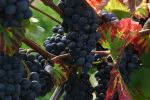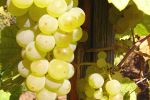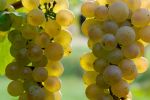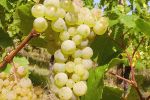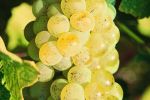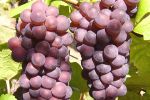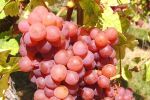The Alsace wines
The Alsatian wines carry the name of the grape variety they come from. There are 7 of them (click on the photos below) :
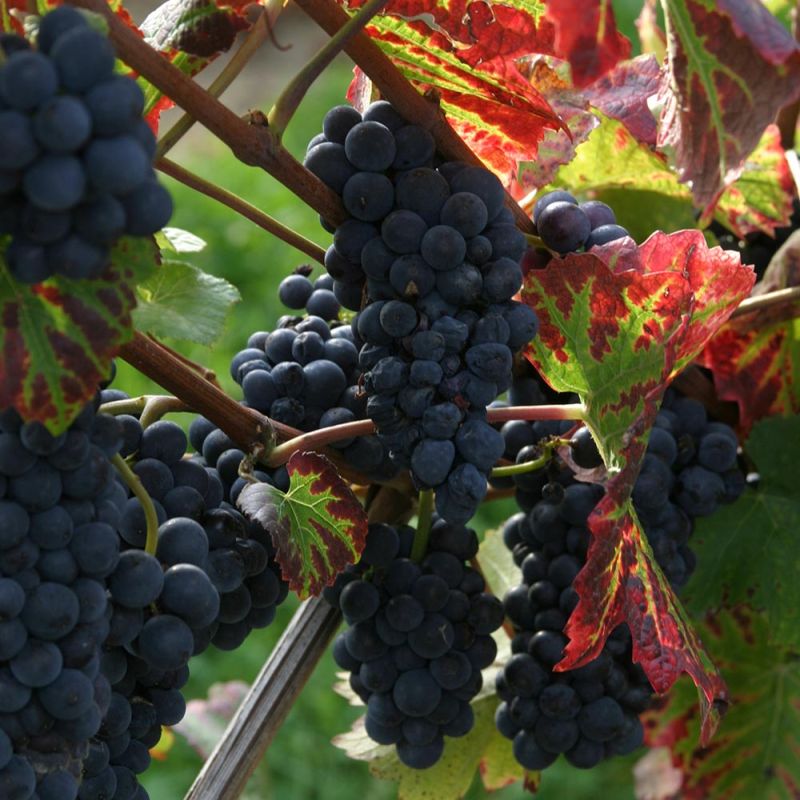
Pinot Noir
Pinot Noir, native from Burgundy, is probably the oldest grape variety imported into Alsace.
It likes limestone or sandy soils and requires low yields.
It’s a very dark-skinned variety, but with white juice. It can therefore be vinified:
- as white : such as for our Crémant Blanc de Noirs for example, when the pressing is done immediately after the harvest.
- as rosé : Le Rosé de Gilg or Crémant Rosé
- as red : Pinot Noir Vieilles Vignes, Pinot Noir élevé en Barriques or Pinot Noir “Les Spontanés”
For the red wines, the destemmed grapes are pressed 6 to 8 days after harvesting, which gives the wines more body and red fruit aromas.
The wine is aged in small 225-litre oak barrels to develop a more complex structure and a more tannic character.
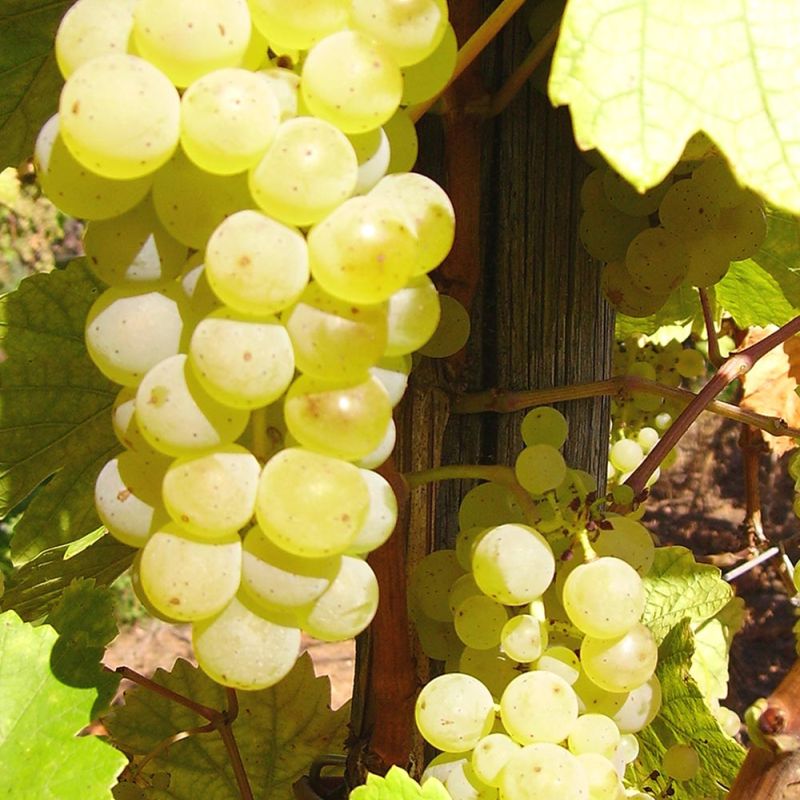
Sylvaner
Originally from Austria (or Transylvania according to some), Sylvaner was introduced into Alsace at the end of the 18th century.
This grape variety is resistant, its vigour is average with regular yields and it matures rather late.
At the winery, we offer several wines made from this grape:
- L’Original S, sparkling “Méthode traditionnelle” 100 % Sylvaner
- Sylvaner “Les Spontanés”
- a cuvée Marnes et Calcaire
- a cuvée Vieilles Vignes, from vines over 35 years old
It’s also particularly successful in clay-limestone soils such as Zotzenberg, where it has obtained the exception: the Grand Cru appellation.
It produces a fruity, fresh and dry wine, very pleasant to drink.
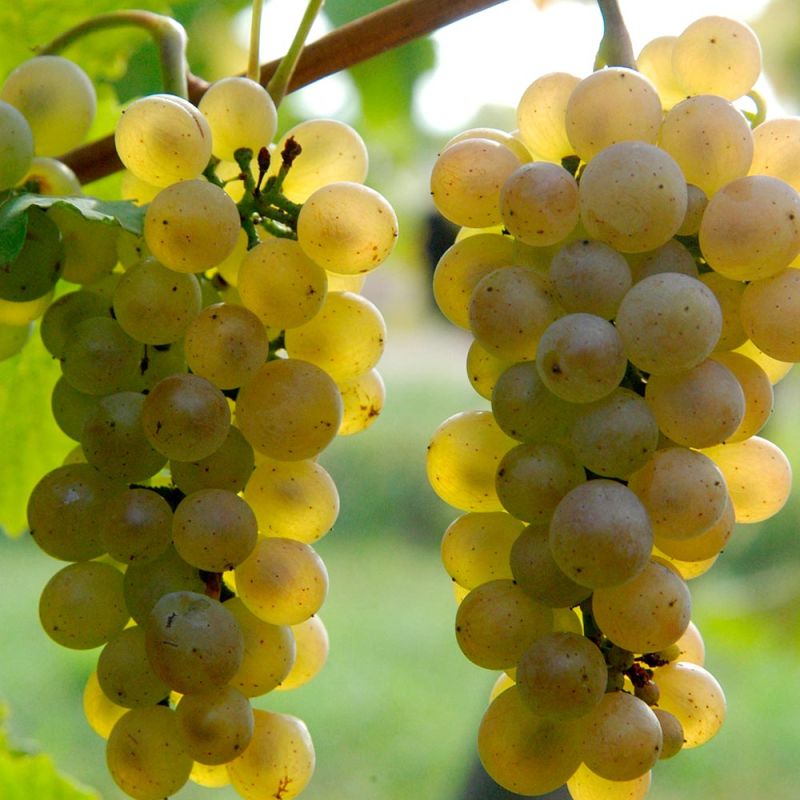
Auxerrois
Our winery grows mostly the Auxerrois variety from the Pinot Blanc family, which originated in Lorraine.
This medium vigour grape variety is early and appreciates fertile limestone or silt soils. Auxerrois has less sourness than Pinot Blanc and produces balanced wines, combining freshness and softness.
Thanks to the growing success of Crémant, Pinot Blanc and Auxerrois have been developed in Alsace (more than 20% of the surface area) over the last thirty years.
At the domain, we offer a :
- Auxerrois Vieilles Vignes, from our oldest plots (minimum 30 years)
But we also use Auxerrois in the blending of our Crémants: Brut, Nature and Prestige.
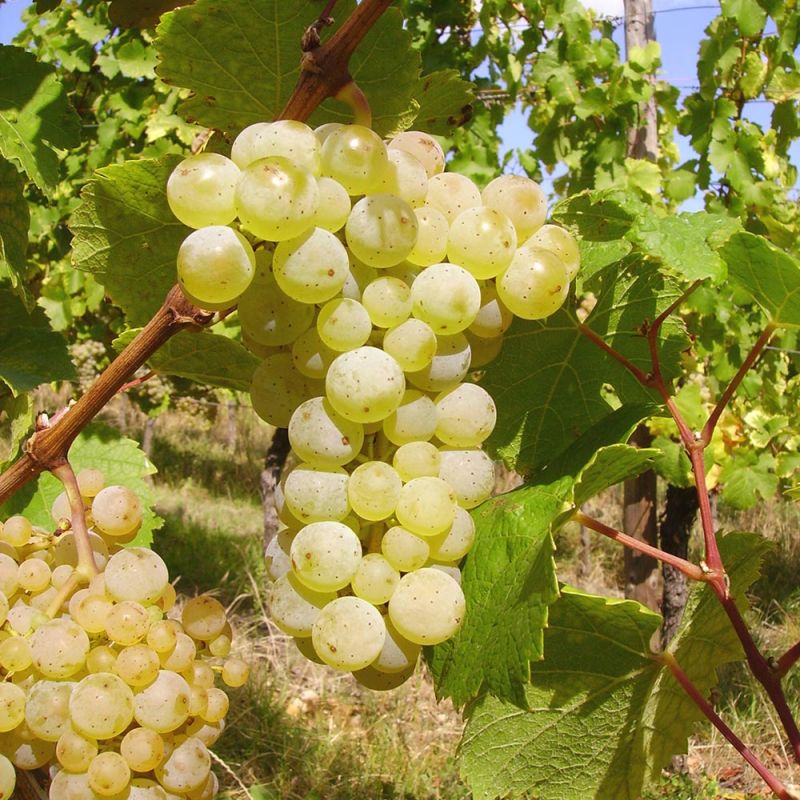
Riesling
“The King of Alsatian Wines”
Riesling is considered as one of the most prestigious white grape varieties in the world.
It comes from the Rhineland and has been present in Alsace since the 15th century.
Of average vigour, it blooms late. It prefers well exposed soils and not too heavy.
Riesling produces dry, elegant, fine and racy wines. Depending on the nature of the soil, it can develop very different aromas: fruity, floral or mineral.
At the winery, we offer several wines made from this grape variety:
- Riesling “Les Spontanés”
- Riesling Marnes et Calcaire
- Riesling Vieilles Vignes
- Riesling Stein, locality on a hillside in Mitterlbergheim
- Riesling Grand Cru Moenchberg, located in the municipalities of Andlau and Eichhoffen
- Riesling Grand Cru Zotzenberg, in Mittelbergheim.
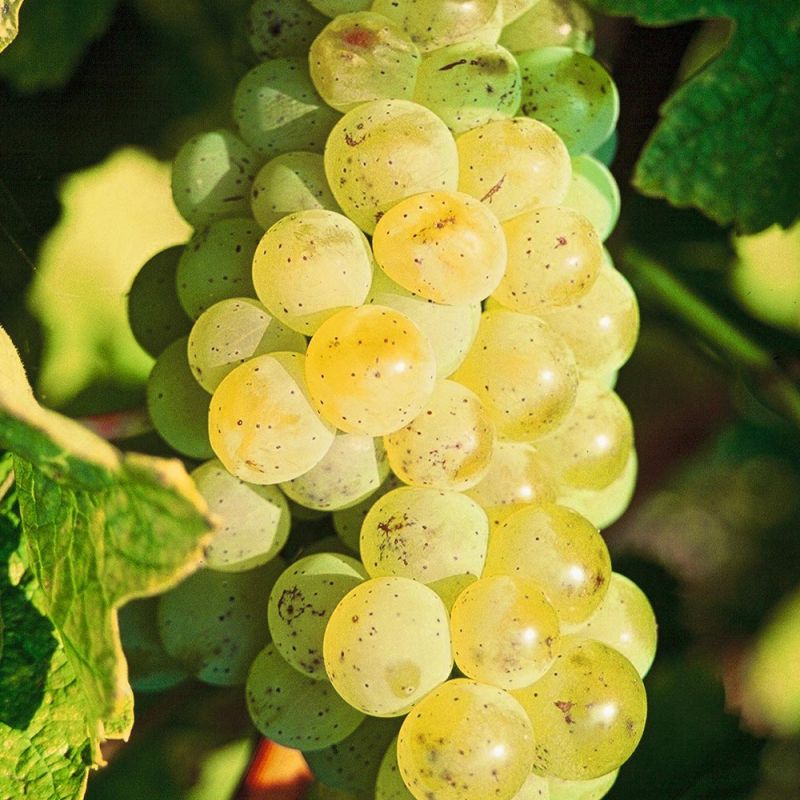
Muscat
The first mention of this grape variety in Alsace was in 1523.
There are several varieties of this grape. In Alsace, we grow Muscat d’Alsace à petits grains and Muscat Ottonel.
At the winery, we have chosen to grow only the Muscat Ottonel, for the finesse of its fruitiness.
Its flowering is often capricious. Early, it’s more exposed to the risk of run-out. When the night-time temperature is too cool, the flower “sinks” and doesn’t turn into fruit.
This grape variety appreciates sandy-loam or clay-limestone soils.
This dry wine develops aromas of fresh fruit on the nose and palate and gives the impression of biting into a bunch of grapes.
At the winery, we offer :
- Muscat (tradition range)
- Muscat “Les Spontanés”
- L’Original M, sparkling “Méthode traditionnelle” 100 % Muscat
- Muscat Vendanges Tardives (sweet)
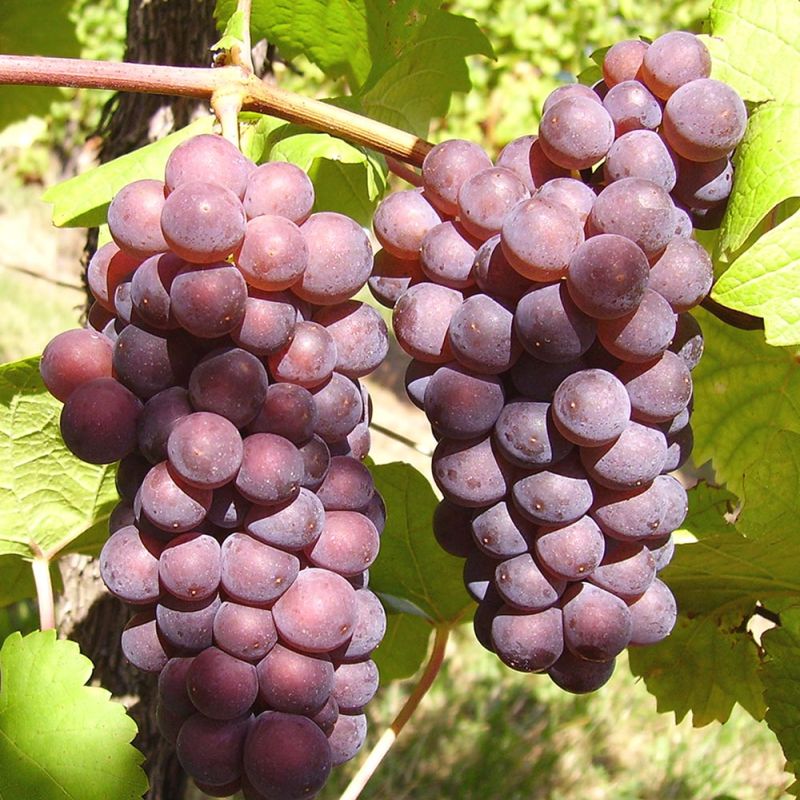
Pinot Gris
This variety comes from Burgundy and was introduced in Alsace in the 17th century.
Pinot Gris is an early ripener and likes deep, rich soil.
It is demanding and prefers the best exposed terroirs.
It produces powerful, full-bodied wines, which can be dry or more mellow. Depending on the vintage, the aromas it develops can be very different: smoky notes, citrus, dried fruit or undergrowth.
At the winery, we offer several wines made from this grape variety:
- a cuvée Vieilles Vignes
- a cuvée Les Tulipes, vinified and aged in barrels
- Grand Cru Zotzenberg, jewel of our village
- Vendanges Tardives and Sélection de Grains Nobles
Some labels carried the name Tokay Pinot Gris. In fact, this grape variety was called Tokay d’Alsace until 1984, then Tokay Pinot Gris. From April 1, 2007, the Pinot Gris appellation is the only one authorized.
The use of the name Tokay came from a legend. The Tokay plants were brought from Hungary to Alsace by Baron Lazare de Schwendi around 1565. But the plants grown today are indeed from the Pinot family and have nothing to do with the Hungarian Tokay produced from the Furmint grape.
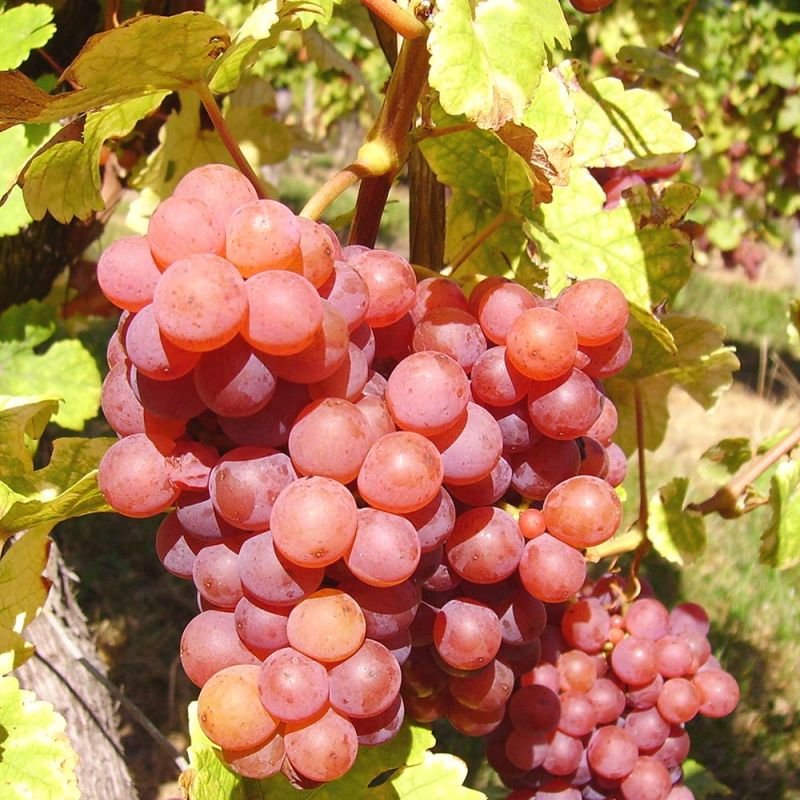
Gewurztraminer
This grape variety is derived from an aromatic selection of the pink Traminer, a grape variety from the South Tyrol in Northern Italy. Gewurz means spice in German.
Gewurztraminer appreciates marl-limestone or sandy-clay soils and the best exposure. It has an average yield, is early and can sometimes be susceptible to run-out in spring.
It produces powerful, rich wines with aromas of spices, flowers and exotic fruits.
This variety is also ideal for overripening harvest: late harvest or selections of noble rot.
At the winery, we offer several wines made from this grape:
